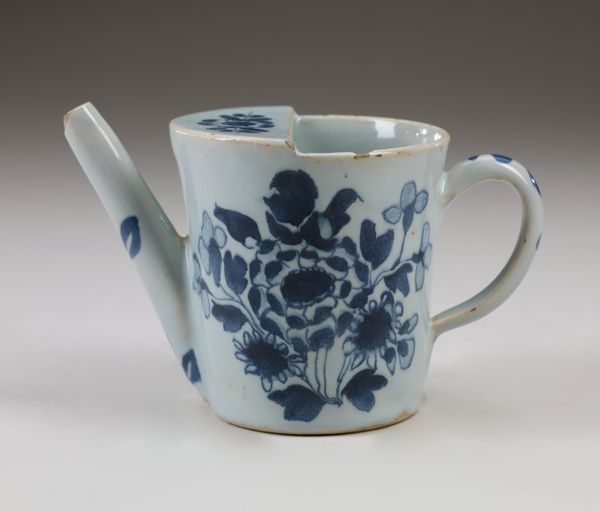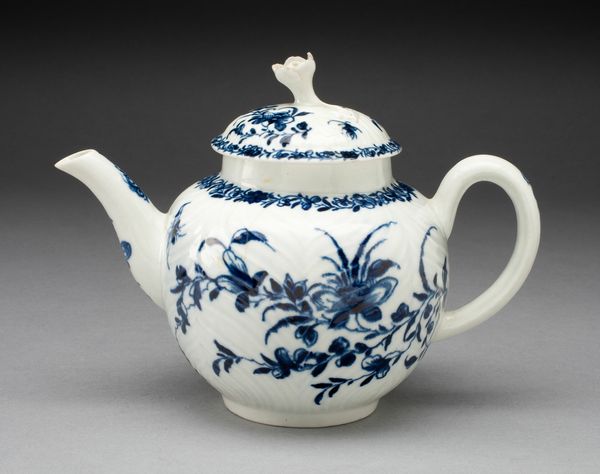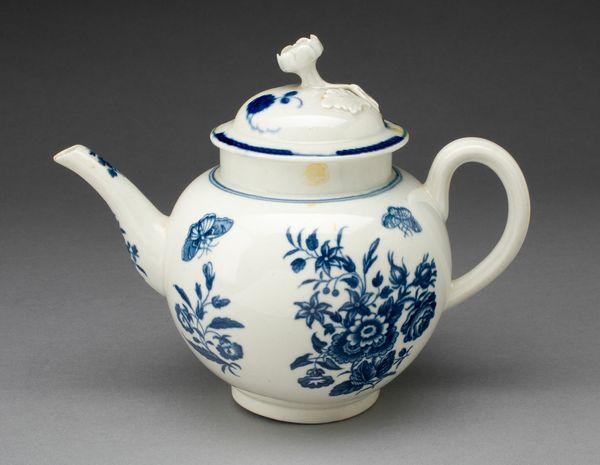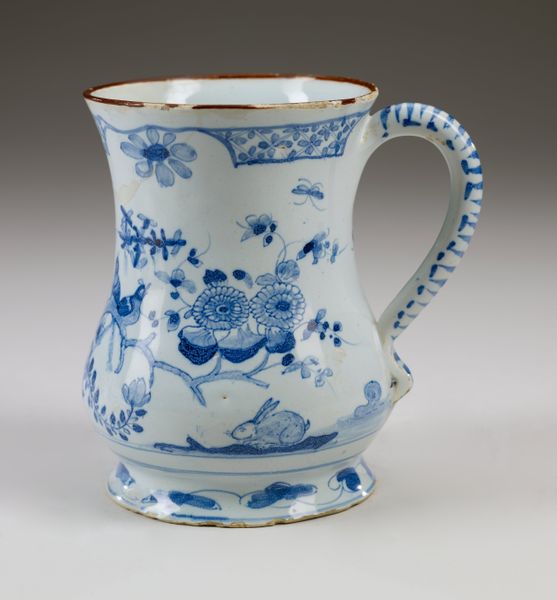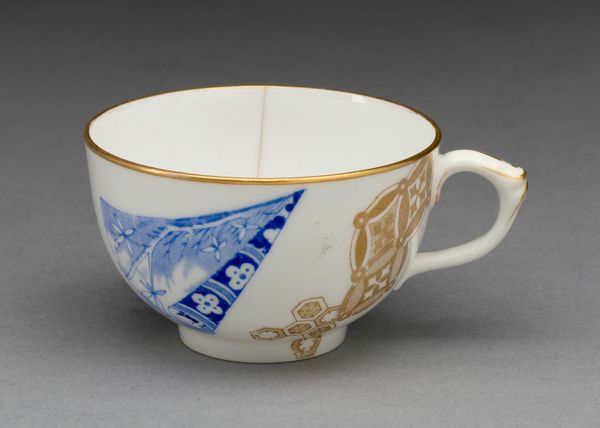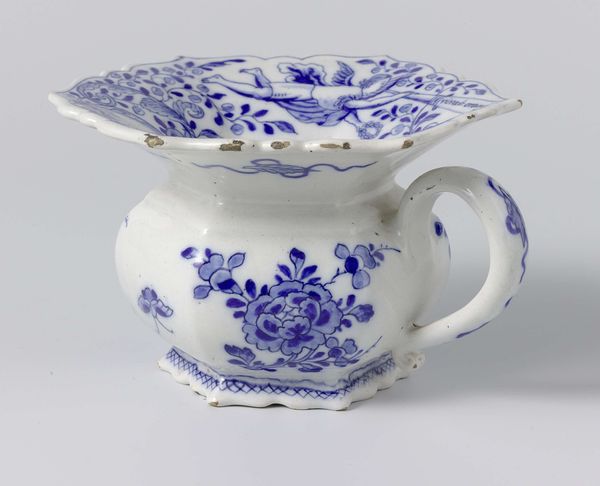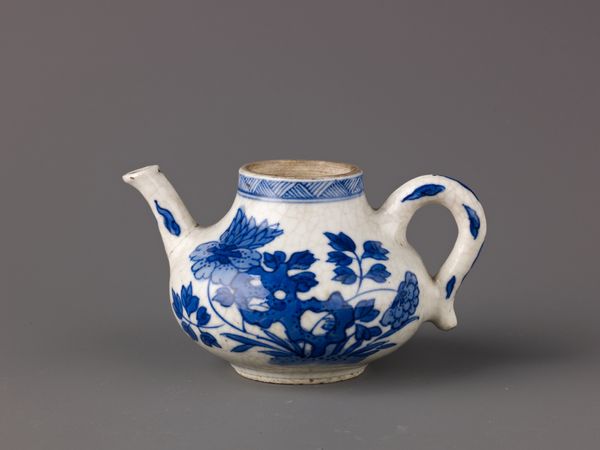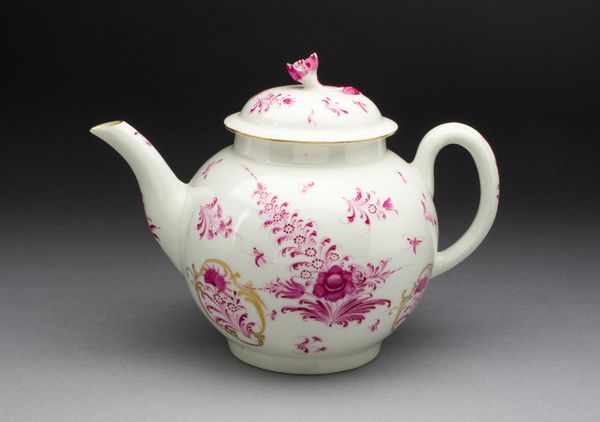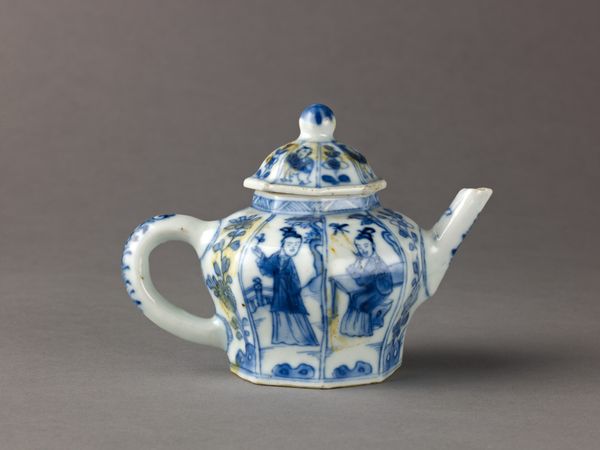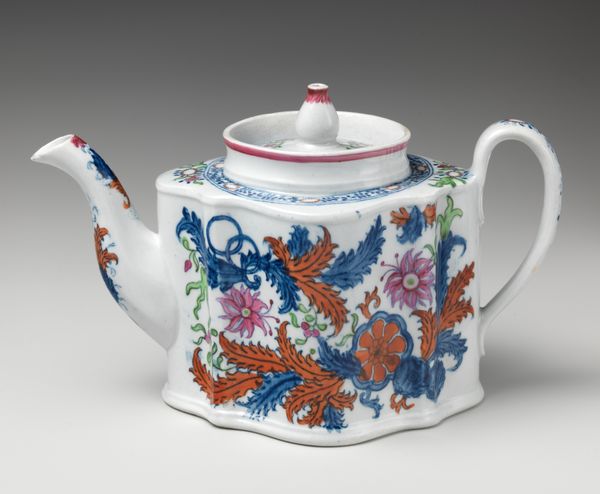
drawing, ceramic, porcelain
#
drawing
#
ceramic
#
porcelain
#
ceramic
#
decorative-art
Dimensions: 7.9 × 15.9 cm (3 1/8 × 6 1/4 in.)
Copyright: Public Domain
Curator: Oh, how charming! This "Feeding Mug" from around 1780, made at the Lowestoft Porcelain Factory, has the sweetest, most melancholic aura, don’t you think? Editor: It strikes me more as a relic of labor and a particular social need, this small porcelain vessel. I mean, look at it, it's literally designed for controlled delivery. Not terribly romantic in its origins. Curator: Perhaps, but look at the hand-drawn floral motifs in that cobalt blue—such delicate care lavished on an object meant for the vulnerable! It's heartbreakingly beautiful, a testament to the gentleness embedded even in the harshest realities of life, maybe not as harsh when we're looking at the privileged children for whom this vessel was probably conceived. Editor: Right, and it's vital to acknowledge the economic realities underpinning its creation. The Lowestoft factory, like many others, relied on specific skills and resources to produce this kind of decorated porcelain. Cobalt, essential for that blue, would have been part of complex trade networks that also touched on colonial exploitation, so the beauty masks a more complex narrative. Curator: And yet… Isn't that part of the power of art? To hold those complexities, the beauty and the beast, side by side? Imagine a child, sickly or frail, being offered sustenance from this very mug, a touch of beauty amidst discomfort, that makes it almost dreamlike... The artist imbued a simple object with tenderness. Editor: While the intention is possibly touching, let’s not ignore how objects like this participated in defining social hierarchies. This mug signifies a certain level of economic ease in 18th-century Britain, when many struggled to have enough to eat, let alone specialized porcelain for gentle feedings. Who had access is the real point. Curator: Absolutely vital to consider that. Still, holding these two perspectives – the potential for intimacy and care alongside the structures of power and access – only deepens my sense of this lovely artifact’s haunting quality. Editor: Precisely. Seeing both the art and the infrastructure clarifies why we can still be so moved by objects carrying complex social baggage.
Comments
No comments
Be the first to comment and join the conversation on the ultimate creative platform.
